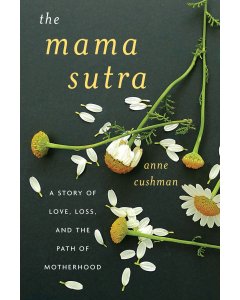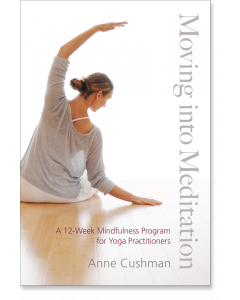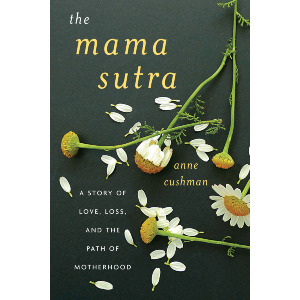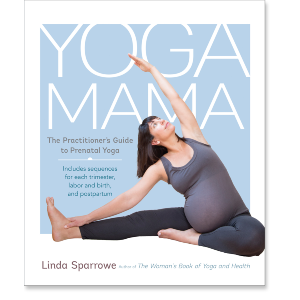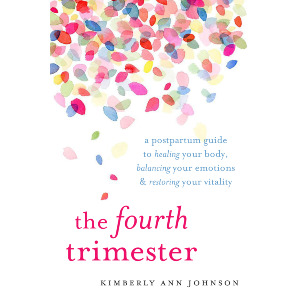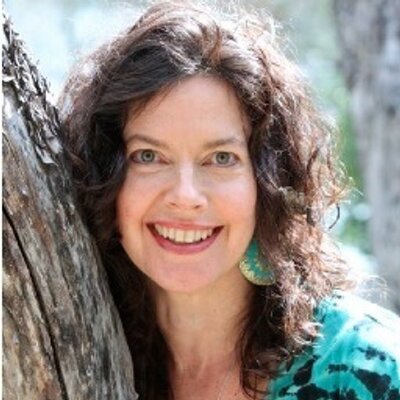

Anne Cushman
Anne Cushman has been practicing Buddhist meditation since 1983 and yoga since 1986 and teaching their integrated practice since 1997. Her essays on the intersection of spiritual practice with daily life have been widely published, appearing in the New York Times, O magazine, Yoga Journal, Tricycle, and the Shambhala Sun. A former editor at both Yoga Journal and Tricycle, she has presented at and directed multiple conferences at Kripalu, including “Yoga and Buddhism” and “The Yoga of Parenting.” Since 2000 she has taught yoga and meditation on close to fifty retreats at Spirit Rock Meditation Center, where she is the codirector of the Mindfulness Yoga and Meditation Training Program.
Anne Cushman
GUIDES
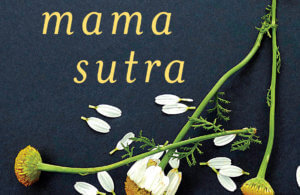
An Excerpt from The Mama Sutra
I’m speeding down Sir Francis Drake Boulevard on a glorious fall day, running through yellow lights, completely stressed out, trying to get to the meditation hall on time.
I’m teaching the daily yoga classes at a women’s meditation retreat at Spirit Rock, a Buddhist retreat center in a rural valley north of San Francisco. But my beloved babysitter, Megan—a twenty-something Zen student with beads and tiny electronic parts woven into her turquoise-and-blonde dreadlocks—had gotten caught in a traffic jam and arrived at my house an hour late. Then I got stuck in the same freeway snarl myself. As I barrel down the winding country road, I imagine a cop pulling me over: “But, officer, it’s a dharma emergency! A hundred women in deep meditation are waiting for me!” I burn rubber into the Spirit Rock parking lot, walk up the hill to the meditation hall as fast as possible while still appearing mindful and serene, and get to the yoga room with seconds to spare, just as the bell is ringing to end the last sitting period.
It’s two days into the seven-day retreat and I’m already exhausted. I would have loved to have participated in the entire schedule of this silent meditation intensive, “Reclaiming the Sacred Feminine,” a title that hinted that it might explore some territory that wasn’t exactly mainstream Buddhist orthodoxy. But as the mother of a two-year-old, sitting a full retreat isn’t possible. So I’m flip-flopping identities each day: a mom all night and morning, a yogini all afternoon and evening.
Unfortunately, Forest has been cutting two molars this week. Last night, he woke me up six times between 11:00 p.m. and 4:00 a.m., at which point I finally brought him into bed with me—where he thrashed around for another two hours, whimpering and talking in his sleep. At one point he cried out in delight, “What’s that down there? It’s . . . it’s the gas pedal!” Then he half woke up and began rooting at my chest, mumbling, “More gas pedal! More gas pedal!” in what appeared to be an archetypal male conflation of car and breast.
By day, he has been in classic two-year-old mode, exploring the limits of autonomy and personal power. All is harmonious as long as I let him indulge his current olfactory obsession: opening and sniffing every jar in my spice drawer, identifying each by scent. That morning, we’d sat and smelled them together for over an hour—“Nutmeg! Cardamom! Rosemary! Turmeric!”—until my nose hummed and tingled in what felt like a practice dreamed up by a Zen master on LSD.
But when I tried to take him to meet some friends at a nearby park, all hell broke loose. Forest didn’t want to leave the car; he just wanted to sit in his car seat listening to Al Green’s “Love and Happiness” nineteen times in a row, while taking periodic hits off his bottle of cinnamon, which he had insisted on bringing with him. Exhausted and starved for adult conversation—even if it was just comparing teething notes with another mom—I did not handle the situation quite as tactfully as I might have. The outing ended in a fiasco, with the absurd spectacle of me grimly hauling a screaming, flailing child toward a playground, in a shower of tears and cinnamon, while he shrieked as if I were carrying him off to the electric chair: “No slide! No swing! More ‘Yuv and Happiness!’” I finally surrendered and took him back to the car. As I started the engine to drive home, the tears turned off like a faucet and were replaced with beams. “I just want you to cooperate,” he told me cheerfully—then chugged a juice box and passed out.
So as I drive off to the retreat that afternoon, let’s just say I don’t exactly feel like the Divine Mother. But arriving at Spirit Rock feels like diving into a pool of peace. The center is tucked in a valley of burnt-gold hills; the autumn air is a musky, minty blend of sage and pennyroyal. After teaching two gentle yoga classes, I sit the rest of the afternoon in the domed meditation hall, dipping thirstily into a vast well of silence.
I find myself asking my perennial question: How can I make my life feel more like a meditation retreat? How do I bridge the apparent gap between yogini and mom?
In two years of motherhood, my body has forgotten what a meditation retreat is like. It’s astonishing to find myself, even for a few hours, in the midst of a hundred silent women, all of them moving slowly, as if underwater—sometimes smiling, sometimes weeping as they stop and sit down in the middle of their hundred individual lives, each as intense and vivid and complicated as my own. I sink into the luxury of having nothing to do but feel my body and heart, breath by breath. For a few hours I stop skimming along the surface of my life and swim into the depths.
As I walk from my silent dinner toward the meditation hall that night—pausing to savor the crimson sunset and the wild turkeys rustling through the long grass—I find myself asking my perennial question: How can I make my life feel more like a meditation retreat? How do I bridge the apparent gap between yogini and mom?
In a dharma talk that evening, the vipassana teacher and psychotherapist Debra Chamberlin-Taylor—a mentor of mine for over a decade—offers a few hints. The sacred feminine, she explains, is a psychological term for an archetypal spiritual dimension that exists in both men and women. It is nonlinear and receptive. It’s about being, rather than doing; integrating, rather than analyzing. It moves in spirals and circles, rather than lines and angles. It intuitively perceives all of life as an interconnected whole (which, of course, is also one of Buddhism’s central teachings). It values the world, the body, the emotions, relationships, the connections of the heart. But in our daily lives—and even in our spiritual practice—it is often paved over by the more masculine attributes of action, analysis, and achievement.
In Buddhist practice, this powerful energy is symbolically represented by images such as Kuan Yin, a female manifestation of an awakened being who “hears the cries of the world” and responds to them. In Tibetan practice, there’s the compassionate goddess Tara in her myriad forms and colors. In other spiritual traditions, it takes the form of a Divine Mother, such as Mother Mary, or a consort, such as Parvati. Invoking such images, says Debra, can help us relax and expand our meditation practice to embrace with compassion the chaos of our daily lives, rather than trying to escape it or push it away.
Debra emphasizes that both men and women can benefit from connecting with the image of a Kuan Yin or Tara. It’s not about trying to project “feminine” and “masculine” qualities onto actual women and men. However, she says that for her, there’s been something especially powerful about leading all-women retreats.
Whether shaped by biology or by culture, women’s deep involvement with relationships, family, children, and home has traditionally been viewed in most religions as an impediment to spiritual practice. “On a women’s retreat with women teachers, they will come into dharma interviews talking about their divorces, their hot flashes, the pain of leaving their children for the first time to go on retreat—things they say they have never dared to talk about on a meditation retreat before,” Debra says. She is sitting on the dais flanked by two statues: a traditional male Buddha, and a slender, busty female deity called Prajnaparamita, the mother of all Buddhas. “And when these experiences are seen as sacred, as part of the spiritual journey—rather than as something to be discounted and passed over en route to something more ‘spiritual’—the whole field of awareness opens up, and women can go deeper into their meditative practice than they have ever gone before.”
[The sacred feminine] is nonlinear and receptive. It’s about being, rather than doing; integrating, rather than analyzing.
That night, Forest is restless again, waking up and calling me over and over. He doesn’t want to come to my bed, but he also doesn’t want to be alone in his crib in his bedroom next door. Finally, at three o’clock in the morning, I lie down on the floor of his bedroom, wrapped in a quilt, to keep him company as he falls asleep.
The floor is hard; I can’t sleep. So I lie there and meditate, feeling my breath go in and out. I am trying to rest with exactly what is: exhaustion, the aching bones, a vast loneliness wrapped around my heart.
Yet I find myself also opening my heart to the joy of that moment: My child lying in his crib, clutching his blue blankie and his stuffed lion. The room filling up with his earthy, yeasty smell, like a cross between lawn clippings and baking bread. The intimate textures of my daily life, filled with “Love and Happiness” and the smells of cinnamon, nutmeg, cardamom, and ginger.
And in that moment, I am on retreat, present in the moment—as much as if I’d been in a cloister at Spirit Rock.
Kuan Yin, I remind myself, does not hide from the world. She sees it all and embraces it, like a mother holding a child. She finds the sacred right here, amid the smells of the spices, the tantrums, and laughter. She finds it in the relationship struggles, the teething, the pain and joy and mundane tasks of everyday life. She reminds us that rebirth is possible in every moment and, indeed, is only possible in this moment.
The next morning, running around the house in his pajamas, Forest stops and points to the beautiful sandalwood Buddha statue on my mantelpiece. “There’s the Buddha!”
I get the statue down and hand it to him. “Eskimo kiss for the Buddha!” he says, and he rubs his nose against the Buddha’s. “And now a butterfly kiss for the Buddha!” And he flutters his eyelashes, intimately, against the Buddha’s cheek.
Share
Related Books


